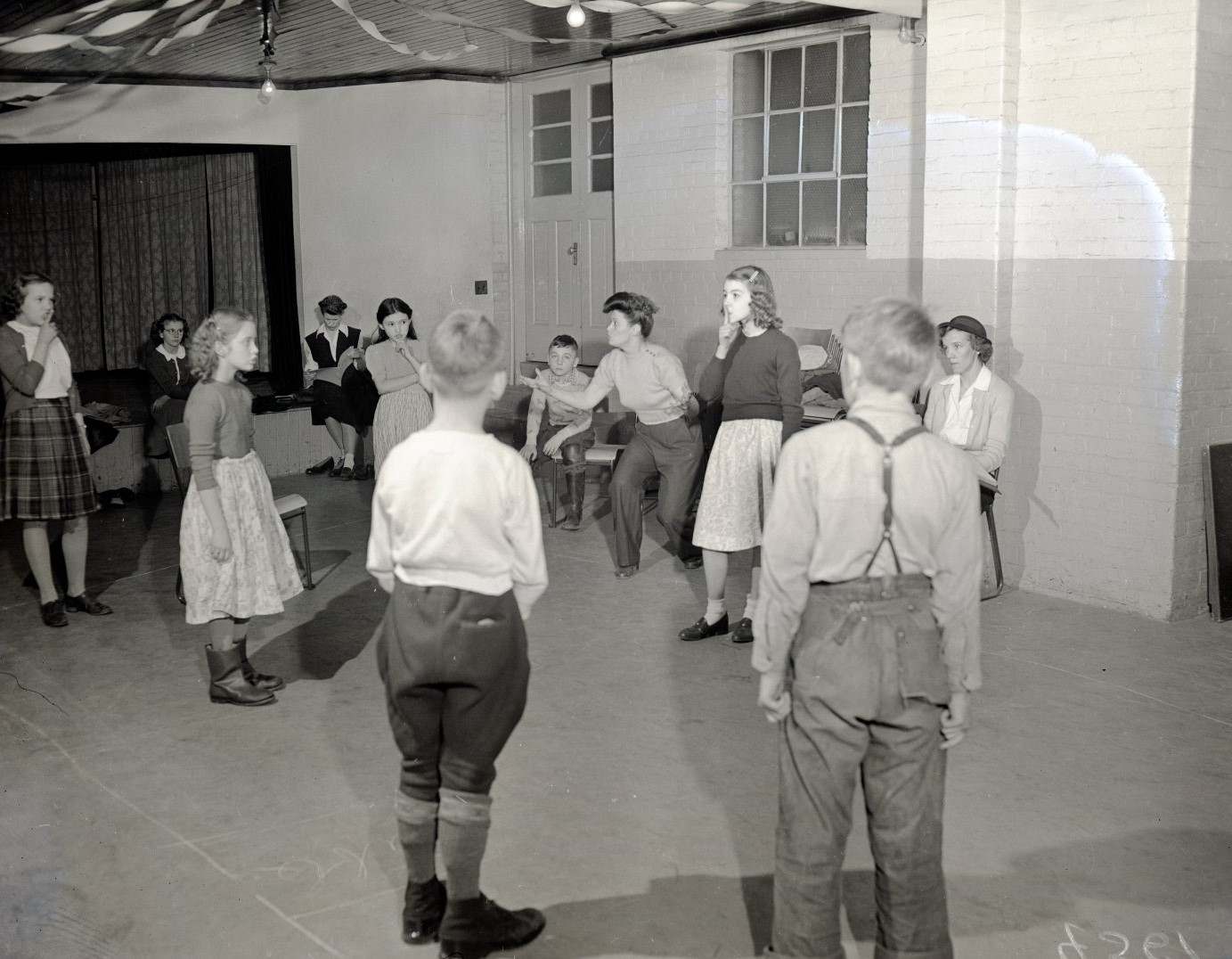The Evolution of Party Games
The Evolution of Party Games
Ever wondered about the origins of your favourite party game? Read on to find out!
By Liz Dommasch, Archivist
As one of the oldest forms of social interaction, humans have invented and played a variety of games since the dawn of ancient civilization. However, by the 19th century, as the upper and middle classes gained more leisure time, gaming became a popular form of entertainment, especially at parties. Instead of watching TV or playing video games like we do today, Victorians spent their time creating and partaking in a wide range of simple games, many of which as still played today including Charades, Blind Man’s Bluff, I Spy, Twenty Questions, and Wink Murder. Other games have been transformed into board games, such as Balderdash (once known as Fictionary). Such games were not just limited to adults, as by the late 1800s, children were given more opportunities to play not only with toys, but develop games that could be played at school, the park, or at social gatherings. Let’s take a look at some of these beloved childhood games that are still being played today:
One of the most beloved children’s games to have withstood the test of time is “Duck, Duck, Goose”. It’s not entirely known when the game was invented, but it is believed to have Swedish roots. The earliest written reference to the game was in a 1919 children’s book.
In 1887, a craze swept the United States, called “Donkey Party”. Originally created in Milwaukee, Wisconsin, it would later be known as the game “Pin the Tail on the Donkey” A staple at every child’s birthday party, the game was played much like it still is now, with one player being blindfolded and spun around three times before attempting to attach a pin to the picture of a donkey. The closest player to the actual tail is the winner.
The game of Red Rover (which inevitably always led to someone getting hurt in gym class!) is said to have started in the 19th century in the United Kingdom as a way to educate children about warfare and the use of strategy to break the solidarity of the enemy. From the United Kingdom the game eventually spread to North America, Australia, and other parts of the world. For example, in Russia, the game is called “Ali Baba” while in Hungary it is called “Send a king, a soldier”.

Children playing a game in class, COA123 Woodstock Sentinel-Review Negative fonds
Originally called “Trip to Jerusalem”, the origins of “Musical Chairs” is unknown, however, it has been played for centuries in many different countries. One theory suggests that the name was inspired by the Crusades, wherein several heavy losses were incurred. Another theory suggests that it was inspired by the Aliyah, the immigration of Jews from the diaspora to the Land of Israel. However, neither theory has ever been confirmed. Regardless, the game of musical chairs has not only become a popular party game, it has become a metaphor in popular culture to describe any activity where items or people are repeatedly and, usually, pointlessly shuffled among various locations or positions.
Finally, the party game “Hot Potato” involves players gathering in a circle and tossing a small object such as a beanbag or even a real potato to each other while music plays. The player who is holding the object when the music stops is eliminated. Although the origins of the game are not clear, it may be traced back to 1888 when Sidney Oldall Addy’s Glossary of Sheffield Words describes a similar game using a lighted candle. By the 1950s manufactured Hot Potato games could be found on store shelves. Remco’s late 1950’s version used small plastic pans for each player, covered up so that the loser-to-be wouldn’t be revealed until the proper time. In the 1960s, “Spudsie” was created that would be wound up before each game. When it would eventually wind down, Spudsie would give off a “ding” signaling whoever was holding it at the time was eliminated.
So many of these games have been passed down amongst the generations and have become family traditions as well as birthday party favourites. What sorts of games did you play as a child? Did you have a favourite game or activity that you used to play with friends or family? I hope this recap has brought back some fond memories of past functions and celebrations.

Image credits:
COA123 Woodstock Sentinel-Review Negative fonds (#2-84 and #2-85 – [before January 1950])
